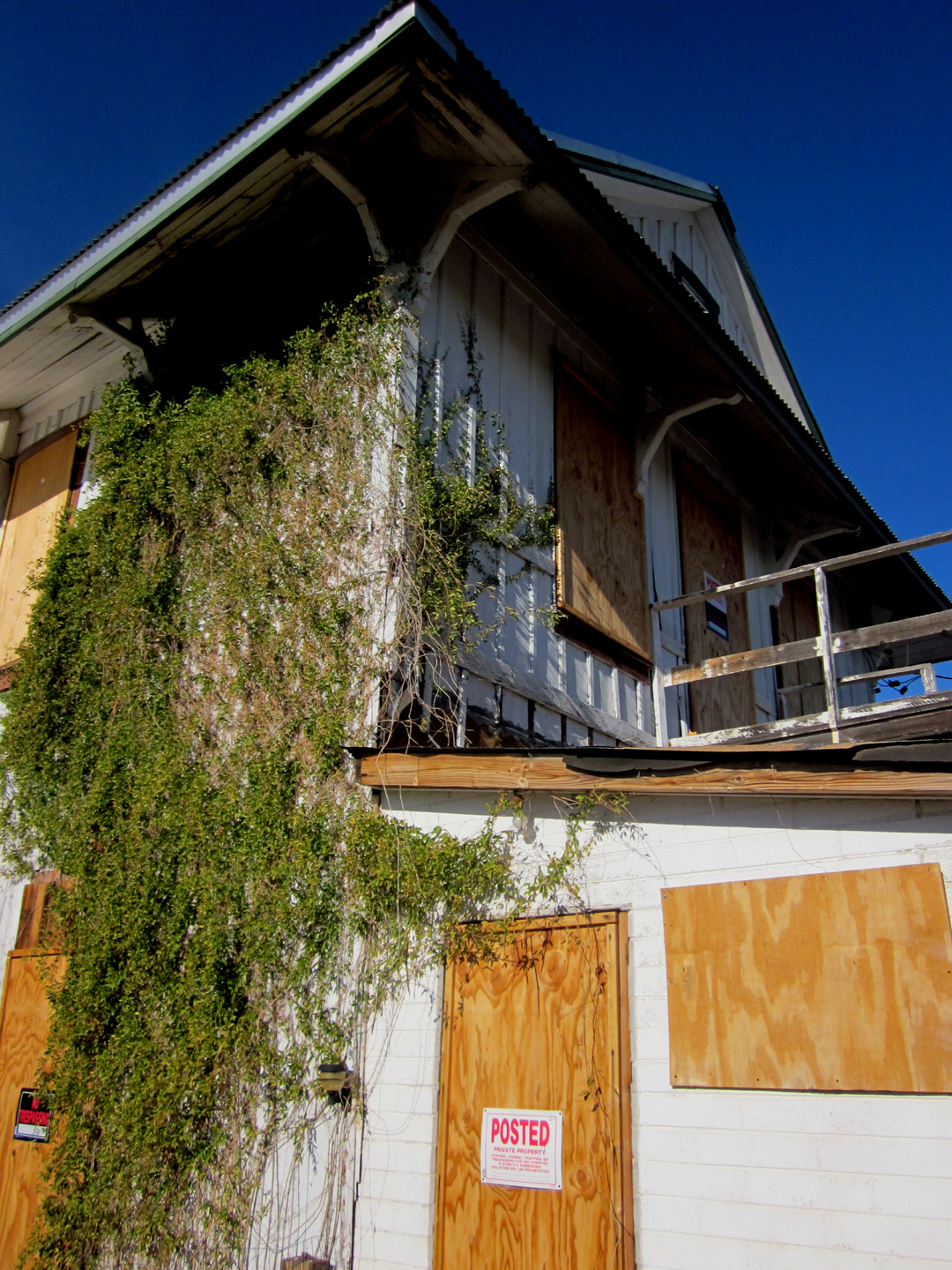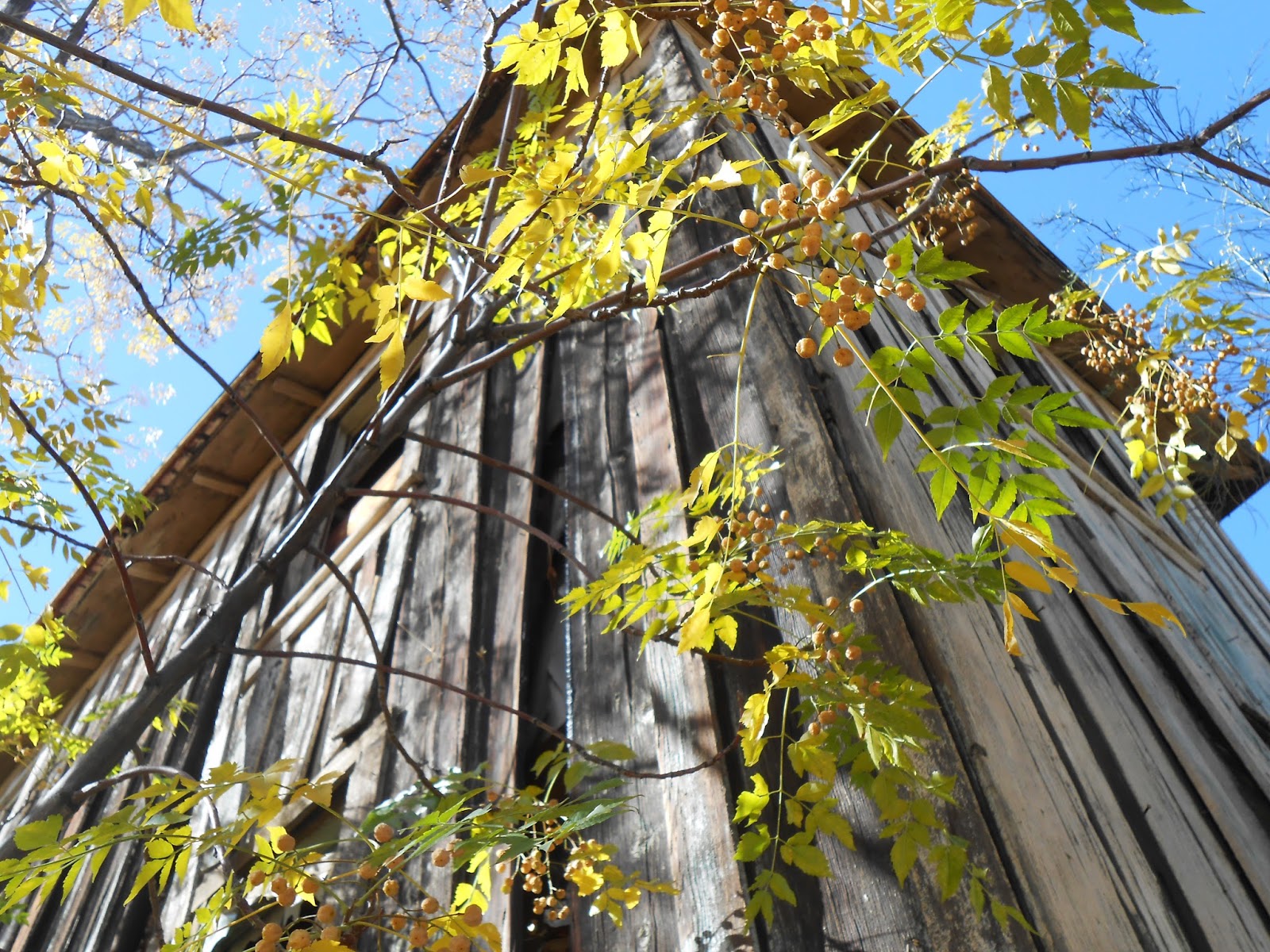I could have stepped back from the motor court and taken a shot of the row of rooms straight on, but having walked in closer, I realized the story was in the telling of the pathway people used to walk from room to room.
(whole building - above- versus part -below)
It's natural when you approach and abandoned site to want to take a shot and say "here's the big empty building on a lot," but resist that temptation. It's just a shot of a building. It doesn't make us understand how that building sat upon the land. Don't take photos like a tourist, take them like a lover. Capture the heart and soul, mood and unique features of the building.
Tease with a bit of the building -

With no electricity in abandoned sites, the play of light through the empty building and through cracks created by nature can be stunning amplifiers of mood and contrast.
Capture light and dark -
Give perspective to the barrenness of the setting -
Capture nature's encroachment -
Don't forget traces of humans -
Texturing and weathering touches -
Remember when you are photographing abandoned sites to share mood-if it looks dark and ominous - highlight that! Utilize contrast and even hue and saturation to bring it out more. If there are broken features, showcase and frame their gaping holes. If it is tall, get under it and look up and make it appear even more tall and narrow. Look for ironies, of a doll sitting in a chair in a room littered with dirt or partial views to create curiosity to imagine the entire scene. Highlight nature taking back the building and weathered and exposed items to the elements. And, as always, light and dark are your greatest tools in abandoned sites, let them shine - through the darkness and create silhouettes.
URBEX'ing is addictive and if you want more tips on how to do it safely, get Julie's and my book. It has not only photography of abandoned sites, but psychic reads and whole sections about how to photograph and safely urban explore.


































Comments
Post a Comment